|

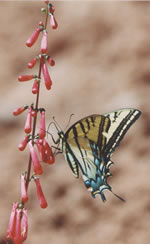 The
warm winter sunlight slants through our south-facing window.
The cat, the dog and myself jockey for position in this swath
of light. Surrounding me is a litter of catalogs with pages
bent, marked for further review. February is derived from
a Roman festival of purification - Februa, but I advocate
that we change it to something that means “Month of the
Garden Catalogs.” The
warm winter sunlight slants through our south-facing window.
The cat, the dog and myself jockey for position in this swath
of light. Surrounding me is a litter of catalogs with pages
bent, marked for further review. February is derived from
a Roman festival of purification - Februa, but I advocate
that we change it to something that means “Month of the
Garden Catalogs.”
I truly enjoy winter. I love the cold and snow and black ice
that groans like a humpback whale. I don’t mind the overcast,
the darkness, the bitter north winds that sneak through numerous
layers of clothing to tickle my bare skin with its icy touch.
I love winter, but, and here is the caveat, for only a few
months. Once February rolls around, and the seed and flower
catalogs start to arrive, I too join the ranks of Moabites
who are ready for winter to wrap itself up and migrate northward.
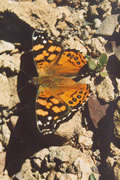 I
don’t know how much time I spend on flower catalogs,
but I bet it is less than the National Average of 4.5 hours
per day. And that’s just for non-gardener enthusiasts.
Though I search out early season snap peas and varieties of
lettuce from the veggie sections, I also pour through the
flower catalogs for ideas and images of what our spring garden
should resemble, though it never does. But, I must confess,
I don’t look to these plants for just color and height,
shade or full-sun requirements. No, these plants must do double
duty to make it into my garden. They have to be bug friendly. I
don’t know how much time I spend on flower catalogs,
but I bet it is less than the National Average of 4.5 hours
per day. And that’s just for non-gardener enthusiasts.
Though I search out early season snap peas and varieties of
lettuce from the veggie sections, I also pour through the
flower catalogs for ideas and images of what our spring garden
should resemble, though it never does. But, I must confess,
I don’t look to these plants for just color and height,
shade or full-sun requirements. No, these plants must do double
duty to make it into my garden. They have to be bug friendly.
In particular, these annuals or perennials have to attract
butterflies, bees, beetles, and other winged creatures from
the insect and avian world. I don’t include penstemons
to just attract hummingbirds. I also want the moths and butterflies
to find a pollination heaven in my yard. And I’m not
just talking beautiful adults, the “winged scales”
that flit and flutter through summer without a bloody care.
No, I’m talking host plants for larvae - those sausage-bag
caterpillars that devour plants like a teenager.
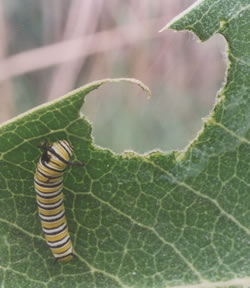 For
the larvae I select Mexican and dwarf evening primrose plants
which attract sphinx moths the way free beer and bratwurst
attracts football fans. I add cabbage or broccoli seeds for
white butterflies and their larvae, since these plants never
seem to reach fruition in my garden. I scatter last year’s
milkweed seeds from mummified pods that have overwintered
in my shed to lure monarchs, the migration specialists, to
lay their eggs on these plants. For
the larvae I select Mexican and dwarf evening primrose plants
which attract sphinx moths the way free beer and bratwurst
attracts football fans. I add cabbage or broccoli seeds for
white butterflies and their larvae, since these plants never
seem to reach fruition in my garden. I scatter last year’s
milkweed seeds from mummified pods that have overwintered
in my shed to lure monarchs, the migration specialists, to
lay their eggs on these plants.
I don’t need
to add any seeds or flowers to attract Mourning Cloaks, dark
butterflies that feed on the sap of trees and lay their eggs
on my neighbor’s hackberry. After the eggs hatch, the
tiny black caterpillars with overgrown hairs devour the tree’s
leaves. Though a good strong gust of wind drops them earthward,
which might be a good thing - for I collect the caterpillars
and put them in a terrarium to mature - safer in there than
exposed to the diets of orioles and migrating warblers. I
place some limbs in with the caterpillars (along with daily
doses of hackberry) for them to hang from and create their
chrysalises. Later on, if the chrysalis survives, I get to
release a new generation into the wild.
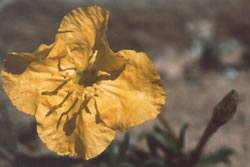 Of
course, I pick out varieties of zinnias, cosmos, and other
annuals that will attract a wealth of butterflies. From red
admirals to swallowtails, painted ladies to coppers, all are
welcome. They may have to share the bounty with some bumblebees
and frolicking six-year-old, but the butterflies seem to manage.
And when we catch sight of a swallowtail working over a head
of echinacea, I know that the chances of pollination are good
and that the goldfinches may find a bounty of seeds later
in the season. Of
course, I pick out varieties of zinnias, cosmos, and other
annuals that will attract a wealth of butterflies. From red
admirals to swallowtails, painted ladies to coppers, all are
welcome. They may have to share the bounty with some bumblebees
and frolicking six-year-old, but the butterflies seem to manage.
And when we catch sight of a swallowtail working over a head
of echinacea, I know that the chances of pollination are good
and that the goldfinches may find a bounty of seeds later
in the season.
Even though it is “cold” by Moab standards (anything
less than 70°F) at least I can spend part of my month
ordering seeds and planning my summer garden. So cast your
vote, and we’ll see if the legislature is up to the task
of renaming the month of February. Anyone go for Gardenuary?
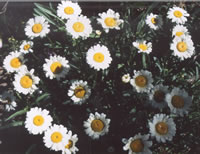 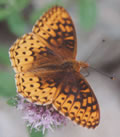
|


 I
don’t know how much time I spend on flower catalogs,
but I bet it is less than the National Average of 4.5 hours
per day. And that’s just for non-gardener enthusiasts.
Though I search out early season snap peas and varieties of
lettuce from the veggie sections, I also pour through the
flower catalogs for ideas and images of what our spring garden
should resemble, though it never does. But, I must confess,
I don’t look to these plants for just color and height,
shade or full-sun requirements. No, these plants must do double
duty to make it into my garden. They have to be bug friendly.
I
don’t know how much time I spend on flower catalogs,
but I bet it is less than the National Average of 4.5 hours
per day. And that’s just for non-gardener enthusiasts.
Though I search out early season snap peas and varieties of
lettuce from the veggie sections, I also pour through the
flower catalogs for ideas and images of what our spring garden
should resemble, though it never does. But, I must confess,
I don’t look to these plants for just color and height,
shade or full-sun requirements. No, these plants must do double
duty to make it into my garden. They have to be bug friendly. For
the larvae I select Mexican and dwarf evening primrose plants
which attract sphinx moths the way free beer and bratwurst
attracts football fans. I add cabbage or broccoli seeds for
white butterflies and their larvae, since these plants never
seem to reach fruition in my garden. I scatter last year’s
milkweed seeds from mummified pods that have overwintered
in my shed to lure monarchs, the migration specialists, to
lay their eggs on these plants.
For
the larvae I select Mexican and dwarf evening primrose plants
which attract sphinx moths the way free beer and bratwurst
attracts football fans. I add cabbage or broccoli seeds for
white butterflies and their larvae, since these plants never
seem to reach fruition in my garden. I scatter last year’s
milkweed seeds from mummified pods that have overwintered
in my shed to lure monarchs, the migration specialists, to
lay their eggs on these plants. Of
course, I pick out varieties of zinnias, cosmos, and other
annuals that will attract a wealth of butterflies. From red
admirals to swallowtails, painted ladies to coppers, all are
welcome. They may have to share the bounty with some bumblebees
and frolicking six-year-old, but the butterflies seem to manage.
And when we catch sight of a swallowtail working over a head
of echinacea, I know that the chances of pollination are good
and that the goldfinches may find a bounty of seeds later
in the season.
Of
course, I pick out varieties of zinnias, cosmos, and other
annuals that will attract a wealth of butterflies. From red
admirals to swallowtails, painted ladies to coppers, all are
welcome. They may have to share the bounty with some bumblebees
and frolicking six-year-old, but the butterflies seem to manage.
And when we catch sight of a swallowtail working over a head
of echinacea, I know that the chances of pollination are good
and that the goldfinches may find a bounty of seeds later
in the season.
